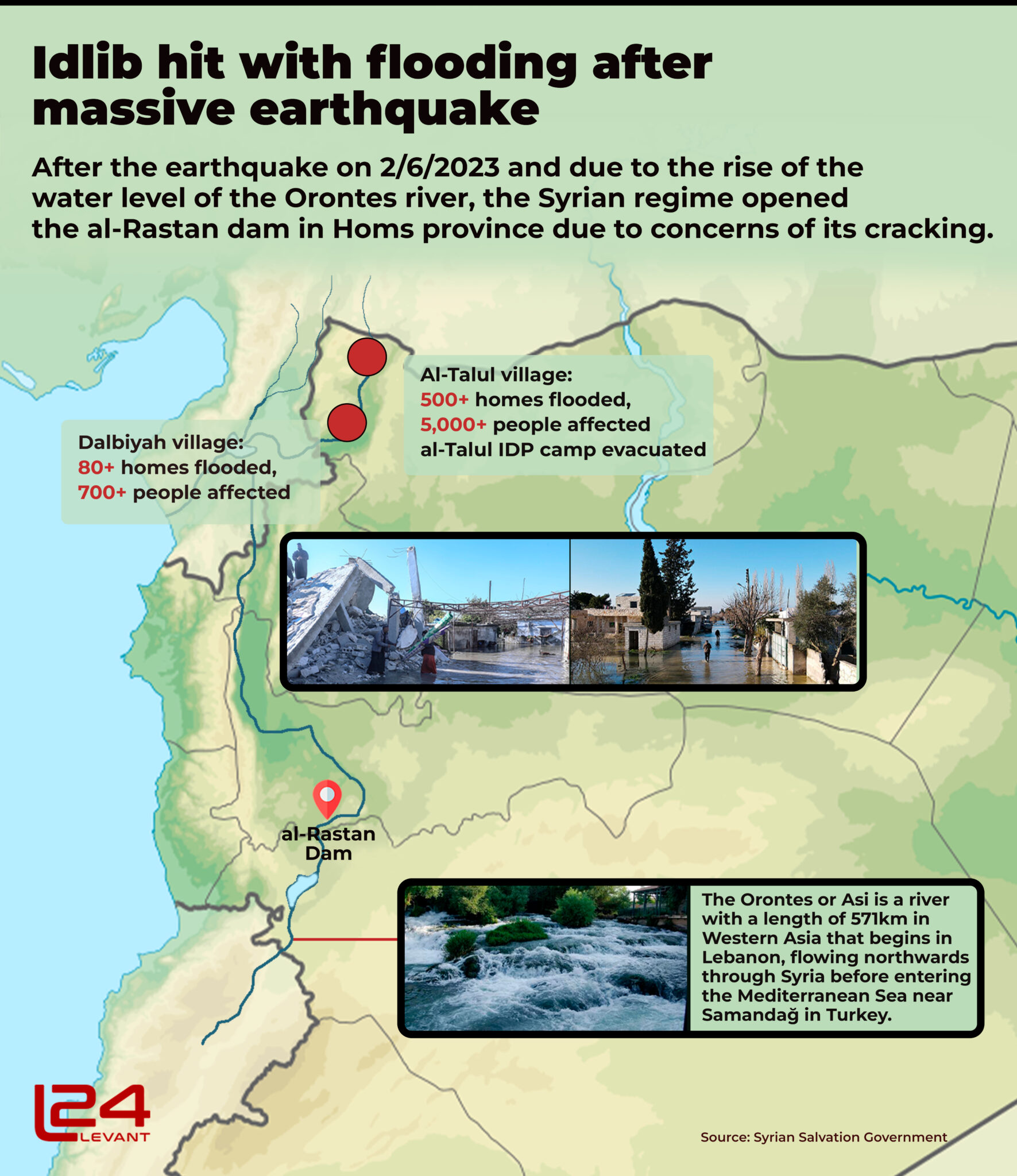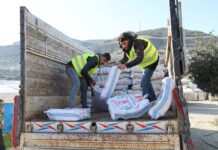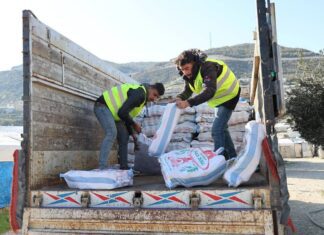Recollections & Reflections
Devastation at Dawn
Muhammad and his family were asleep in their home; it was the first week of February and the last month of a wet, cold winter. The long night was almost at an end, soon it would be dawn, but that Monday morning would be like no other for Muhammad and his family, or the world.
“I was asleep with my family, and when the earthquake began, my wife was the first to wake, she quickly woke me up and I told her to follow me to the bathroom, thinking it was safe. I took my son, while she went to get my daughters. After I reached the bathroom, the building collapsed with us inside. My son was in my hands, and I realized he had died. I asked Allah to have mercy on him and tried to call out to the rest of my family. When no one responded – I knew they had moved on to be with their Lord.”
Muhammad Pasha is the sole survivor of his family, having lost his home, wife, children, and one of his hands to one of the worst earthquakes in the last century. He used to work as a nurse in one of the hospitals in Idlib before that fateful day in February of 2023 changed his life forever. He would remain trapped under the rubble for hours until the civil defense teams were able to rescue him.
On February 6, around 4:15 am, a powerful 7.7 magnitude earthquake struck Southern Turkey and Northern Syria. The epicenter was located in central southern Turkey near the Turkish-Syrian border. This seismic event was followed by another significant earthquake, registering at 7.6 magnitude, approximately 11 hours later. The impact of these twin earthquakes, along with the ensuing aftershocks, resulted in widespread devastation, causing significant human casualties and extensive material losses in both countries. The affected regions faced a challenging and urgent situation as they grappled with the aftermath of this natural disaster.
Mahmoud Abu al-Majd from Atarib, in northwestern Aleppo recounts his own experience on that fateful day, “I was asleep when the earthquake occurred, I woke up at the beginning of it, and I waited a little while for it to stop and end, but it continued and continued until I heard the walls of my house begin to collapse, with the screams of my family living on the upper floor getting louder. We all fled into the street and were shocked at the sight of the surrounding buildings that had collapsed over the people. Among the buildings was the house of my cousins who all died under the rubble of their house. It was a real disaster and a horror the likes of which we had never seen before. All the people were stumbling around as if intoxicated, even though they were not drunk.”
12 Years of War & Displacement a Recipe for Disaster
Northwestern Syria, a region heavily impacted by the earthquake, faced compounded challenges due to severe overpopulation caused by the displacement of IDPs from other areas. These displacements were primarily a result of violations by the Assad regime, which targeted both homes and IDP camps housing the displaced. The fragility of building structures and infrastructure, frequently targeted in offensives by the regime and its Russian ally, further exacerbated the devastating impact of the earthquake.
The seismic of February 6 had a devastating impact on an already fragile region, compounding the challenges faced by the local population and humanitarian organizations. Nada Al-Rashed, a member of the White Helmets Management Board, emphasized the lack of infrastructure and building regulations as key factors exacerbating the consequences of the earthquakes. He stated, “We have been living through earthquakes for over 13 years, experiencing similar but not equally powerful tremors almost every day. These earthquakes reflect the same destruction and devastation of livelihoods, economy, and education. When the earthquake hit Syria, its effects were multiplied compared to other regions.”

An absence of proper regulations led to construction in vulnerable areas, resulting in catastrophic consequences. Al-Rashed further explained, “Most areas weren’t originally supposed to be inhabited, but unfortunately, due to the absence of proper regulation, construction occurred, leading to catastrophic consequences.” The destruction caused by bombings prior to the earthquakes further amplified the impact, particularly in areas like Atarib, southern rural Idlib, Idlib City, and northern rural Idlib.
Khaled Qabsh, Program Manager for the Violet Organization, highlighted the coinciding challenges faced by the region, including negotiations related to humanitarian aid entry and a reduction in support for local organizations and humanitarian sectors. He stated, “The earthquake coincided with major challenges faced by the region, including negotiations related to extending the decision to allow humanitarian aid entry into northwest Syria across the border.” The education sector suffered substantial damage, with challenges arising from the lack of safe spaces for children to return to learning. Qabsh also pointed out, “The health sector was not immune to the damage, with 70 health centers in northwest Syria affected by the earthquake, highlighting the challenges facing the health infrastructure in the region.”
The earthquakes strained an already vulnerable region, highlighting the urgent need for international assistance and collaborative efforts to support the affected population and rebuild essential infrastructure.
Failure of Aid Mechanisms
A second tragedy, compounding that of the earthquakes, was the failure of the UN’s main rescue mechanisms to respond to the earthquake victims. These events revealed significant failures in international aid mechanisms and humanitarian relief efforts. The delay in humanitarian assistance and the inadequacy of the response raised concerns and criticism from various organizations and individuals directly affected by the disaster.
The Syrian Network for Human Rights (SNHR) released a report urging the UN to investigate the reasons behind the delayed arrival of humanitarian assistance in the region, emphasizing the devastating consequences of the late arrival of aid and calling on the UN Secretary-General and the UN Under-Secretary-General for Humanitarian Affairs to direct all UN mechanisms and agencies to work under a direct mandate from the UN General Assembly and utilize all available border crossings to access northwestern Syria.

The Ministry of Humanitarian Affairs and Development of the Syrian Salvation Government (SSG) echoed the sentiment, emphasizing the exacerbation of refugees’ suffering due to the impact of the earthquakes on the region’s infrastructure. The director of the Earthquake-Affected Directorate, Mr. Ammar al-Najjar, highlighted the ongoing needs and economic and political blockades hindering the region’s recovery efforts.
“One of the major challenges faced in the response,” says Qabsh, “was the difficulty of coordinating services and aid delivery, as well as the inadequacy of funding to cover the extensive post-disaster needs. The most significant lesson for humanitarian organizations was the need to shift focus within emergency response from short-term relief to early recovery, empowering local communities, and developing their capacities for a rapid and unified response to any disaster.”
The failures of international aid mechanisms in responding to the crisis, typified by delays and inadequacies in response further exacerbated the suffering of the affected population, exposing the urgent need for more efficient and unified approaches to humanitarian relief efforts.
However, in the absence of strong, swift emergency service from the international community or organizations local authorities, charitable organizations, and civil defense services quickly leaped to action to address the dire situation, save lives, and serve the community as best they could.
Rapid Response
Through the combination of governmental initiatives, humanitarian aid, and grassroots efforts, the region saw significant progress in addressing the immediate and long-term needs of those impacted by the natural disaster.
Qabsh, lauded the immediate response of local organizations to the urgent needs of earthquake victims, “In the early days of the disaster, local organizations responded immediately to urgent needs without international support or intervention. Syrian local organizations,” he continues, “based on their available resources, materials, and human capabilities, remained in direct contact with earthquake victims, providing immediate support and swift intervention emphasizing their sustained support and intervention without relying solely on international assistance.” He also highlighted the rehabilitation of basic infrastructure and productive assets by local organizations, despite the challenges posed by insufficient support for comprehensive recovery projects.
Earthquake-affected Director al-Najjar reflects that, “The response was highly commendable, surpassing governmental and societal expectations. Both the government and humanitarian organizations showed a high level of seriousness in their response. Areas of excellence include a tendency towards humanitarian needs, organizational requirements, accuracy in information, returning belongings to their owners, organizational procedures, and the distribution and organization of shelters,” he concluded.

He highlighted the extensive training and experience of the Syrian Civil Defense team in responding to disasters, drawing parallels between their response to earthquakes and bombings. Yet maintained it was a united effort, “The rescue efforts were not solely our doing – it involved the entire population in northwest Syria.”
Nada Al-Rashed emphasized the crucial role of community trust and collaboration, noting the active involvement of local organizations and forums in the comprehensive rescue operations. The effective establishment of an operations room and the collective efforts of various stakeholders contributed to the success of the rescue mission.
“Immediately after the earthquake occurred,” Engineer Saeed al-Ashqar, Advisor to the Minister of Local Administration told L24, “(Our ministry) formed emergency response committees for the affected area [which] began evaluating buildings and the overall situation in the region two days after the earthquake.” He emphasized the prioritization of public safety through the evaluation and removal of structurally compromised buildings. The establishment of sub-committees for specific regions and the relocation of affected residents to shelter centers underscoring the meticulous planning and execution of recovery efforts.
Survivor al-Majd, praised the swift removal of rubble by volunteers and Civil Defense teams, followed by the arrival of aid campaigns providing cash, relief baskets, and other forms of support. He highlighted the collaborative efforts of various organizations and individuals in distributing aid to those in need, underscoring the spirit of cooperation that emerged in the aftermath of the earthquakes.
These collaborative efforts led to positive results in northwestern Syria following the devastating earthquakes and the remarkable synergy between local authorities, charitable organizations, and civil defense services in addressing the multifaceted challenges. This collaborative and proactive approach adopted by those on the ground, not only facilitated the immediate delivery of aid locally but also laid the groundwork for long-term recovery and rehabilitation efforts.
Assad’s Unrelenting Attacks
The united efforts of the people of northwestern Syria went to great lengths to salve the suffering of the Syrian people in the wake of the catastrophic earthquakes and nearly three months of aftershocks that struck the region. Yet perhaps the greatest aftershock in the aftermath of this natural disaster was the aggressive actions of Assad and Russia, leading to a new wave of tragedy for the already traumatized victims.
Immediately following the earthquakes, the SNHR documented a series of attacks by the Syrian regime and its allies targeting the earthquake victims. Shockingly, some of these attacks took place during the crucial search and rescue operations.
The SNHR’s report revealed that a total of 132 regime attacks were recorded in the nine weeks following the earthquakes, resulting in the deaths of five civilians, including a child, and injuring at least 42 others. Additionally, vital facilities such as schools, medical clinics, mosques, and markets were targeted; further exacerbating the humanitarian crisis and inhibiting rescue operations and aid deliveries.

IDP camps, which were supposed to provide refuge for the displaced, became targets for deliberate and indiscriminate bombardment by regime forces, Russian forces, and the Syrian Democratic Forces (SDF). This reckless and merciless targeting of civilian areas resulted in further suffering for those who had already endured the horrors of the earthquakes.
The relentless attacks on earthquake-affected areas, emergency shelters, and IDP camps have not only caused loss of life and further displacement but have also deepened the psychological trauma experienced by the survivors. The callous disregard for the safety and well-being of civilians by the Assad regime and its allies has added a new layer of suffering to an already devastated population.
Earthquake Politics
Various studies have shed light on the regime’s opportunistic maneuvering in the aftermath of the disaster. An Atlantic Council study by Samir Aita and Zedoun Alzoubi highlighted the seismic impact of the earthquakes on the political landscape of the region. It pointed out that the catastrophe presented an opportunity for various Syrian parties to reassess their positions and consider a unified approach to the country’s future. However, it also underscored the challenges and complexities that emerged in the wake of the earthquakes, particularly in the context of existing international policies and regional dynamics.
Furthermore, a study by Taim Alhajj for the Carnegie Endowment for International Peace emphasized how sympathetic and influential Arab countries began engaging with the Syrian government behind closed doors following the earthquakes. This engagement signaled a shift in regional dynamics, with countries like Egypt and Saudi Arabia showing willingness to overlook long-standing sanctions imposed on Syria. The study highlighted the regime’s attempts to leverage the earthquake’s devastation to evade international pressure and garner support from regional players.

Assad used the earthquake as a pretext to demolish hundreds of buildings damaged in bombings by Russia and his forces, claiming that they had sustained structural fractures in the earthquake in a bid for “reconstruction funds” he could credit as “earthquake relief.” This callous exploitation of the disaster for political and economic gain only exacerbated the suffering of the already traumatized population and showed the depths of depravity the morally and fiscally bankrupt regime was prepared to go.
Exploiting Tragedy
Following the outpouring of concern and goodwill from people around the world due to the horrifying intensity of the quakes, the Assad regime wasted no time in its efforts to capitalize on the suffering of the Syrian people. While others worked tirelessly around the clock to save lives, digging through rubble in the blistering winter cold with their bare hands, and opening shelters and their homes the regime utilized the disaster for material gains and prestige.
The local authorities, military factions, Syrian people, and local civil and humanitarian organizations risked their lives to come together and help one another, constantly under threat of aftershocks, rain, cold and ceaseless attacks by Assad and his allies, even during crucial search and rescue operations.
Meanwhile, Assad shamelessly exploited the crisis for his own political and economic gain, disregarding the urgent needs of the earthquake victims and obstructing humanitarian aid efforts. The regime’s actions have drawn widespread condemnation from international organizations and human rights groups, shedding light on the dire consequences of its cynical manipulation of the humanitarian crisis. Going forward the victims of the earthquake deserve compassion, support, and justice, free from the regime’s political exploitation, attacks, and obstruction of humanitarian aid, which continues even a year after the dust has settled.









